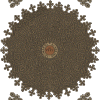Иранска теория за произхода на древните българи
-
Теми
-
- 81 мнения
- 3405 views
-
- 12 мнения
- 968 views
-
Руско-украинската война 2022-2024 година. 1 2 3 4 52
От Р. Теодосиев, in Руско-украинската война 2022 година.
- 1294 мнения
- 51444 views
-
- 3633 мнения
- 143317 views
-
- 1 мнение
- 53 views
-
-
Последно разглеждащи 0 Потребители
- No registered users viewing this page.





Recommended Posts